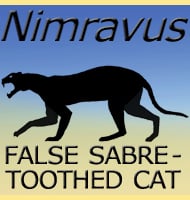Adelphailurus
In Depth One of the lesser known machairodonts, the placement of Adelphailurus within the machairodontinae has been questioned with speculation that it may be a false sabre-tooth. Adelphailurus also had a pair of second premolar teeth, a primitive feature that harks back to the early days of felid evolution. Although fossil remains of Adelphailurus are … Read more
